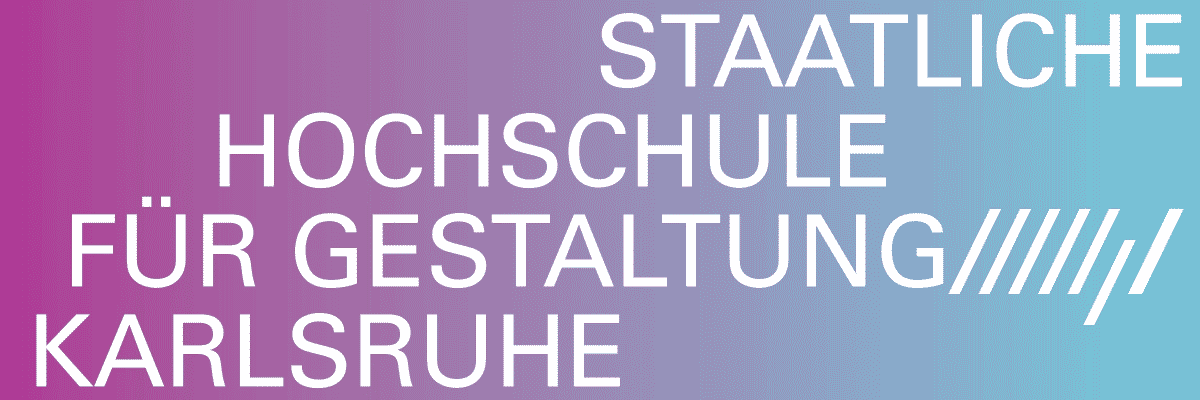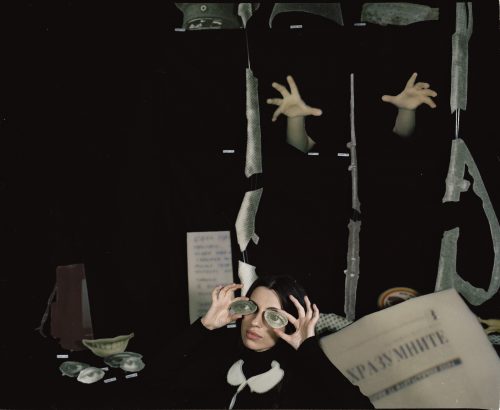
Sofie Tobiášová, Tobias Izsó
Between the Doors
Project Info
- 💙 Hunt Kastner, Prague
- 💚 Eva Slabá
- 🖤 Sofie Tobiášová, Tobias Izsó
- 💜 Eva Slabá
- 💛 Michal Czanderle
Share on
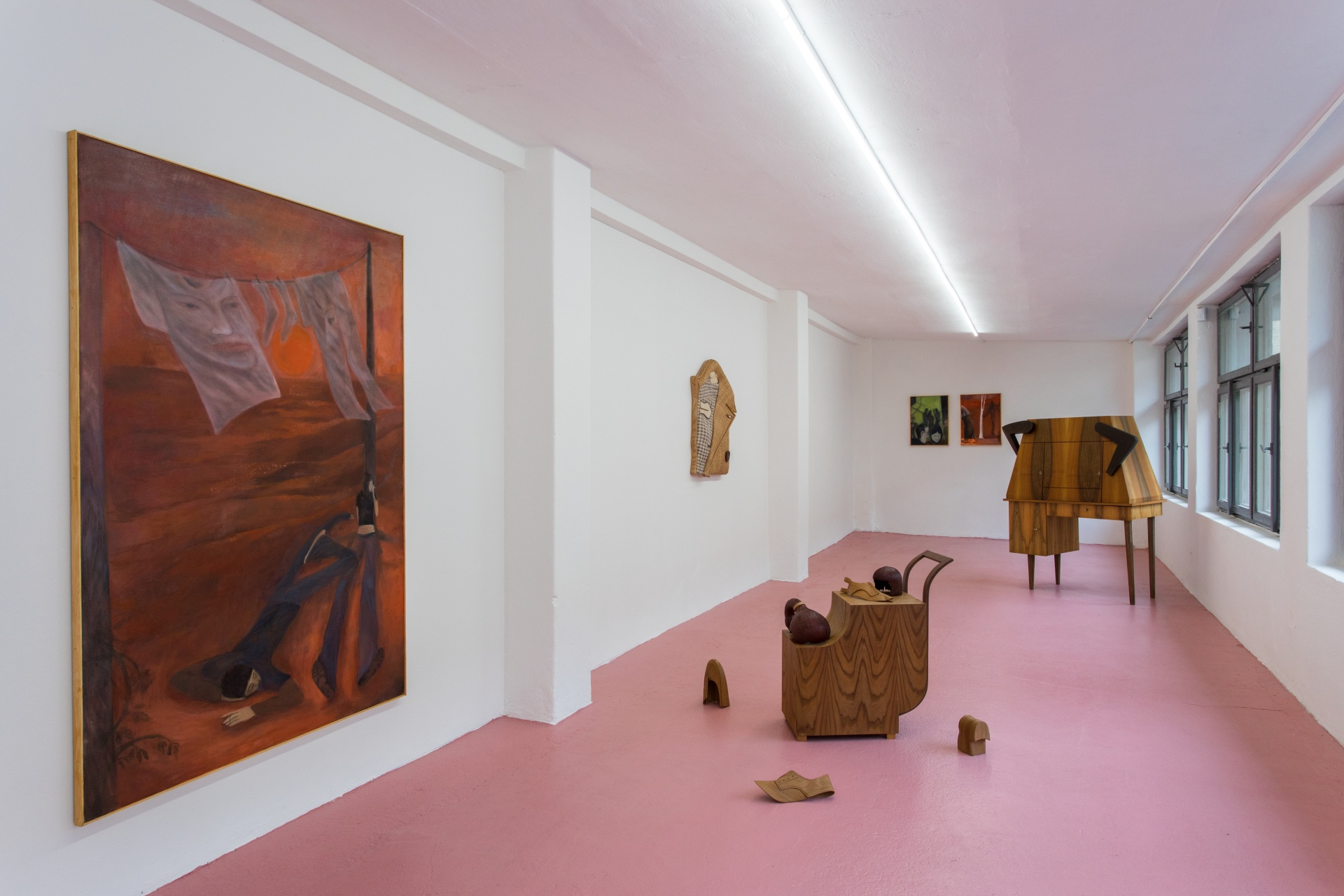
Advertisement

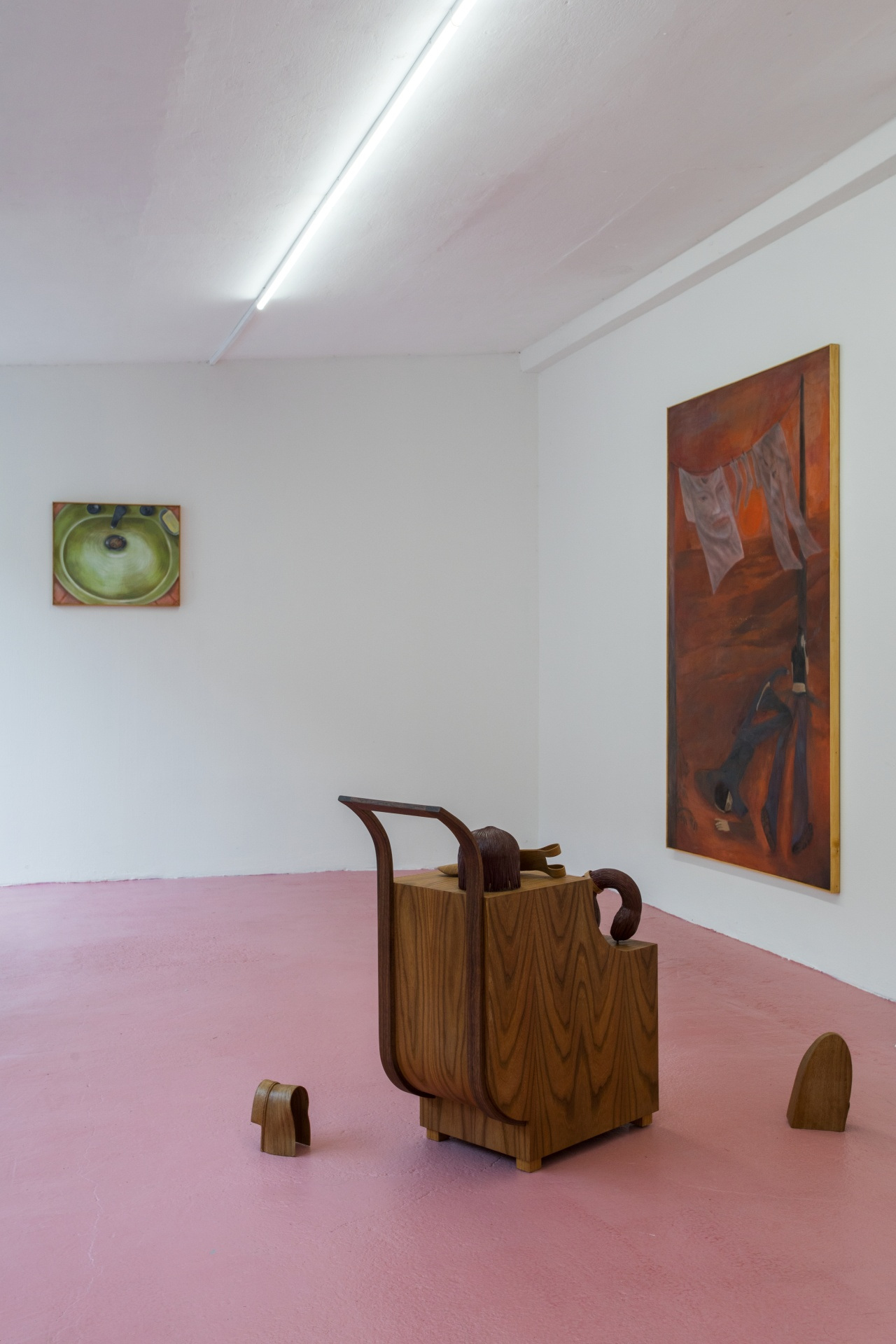

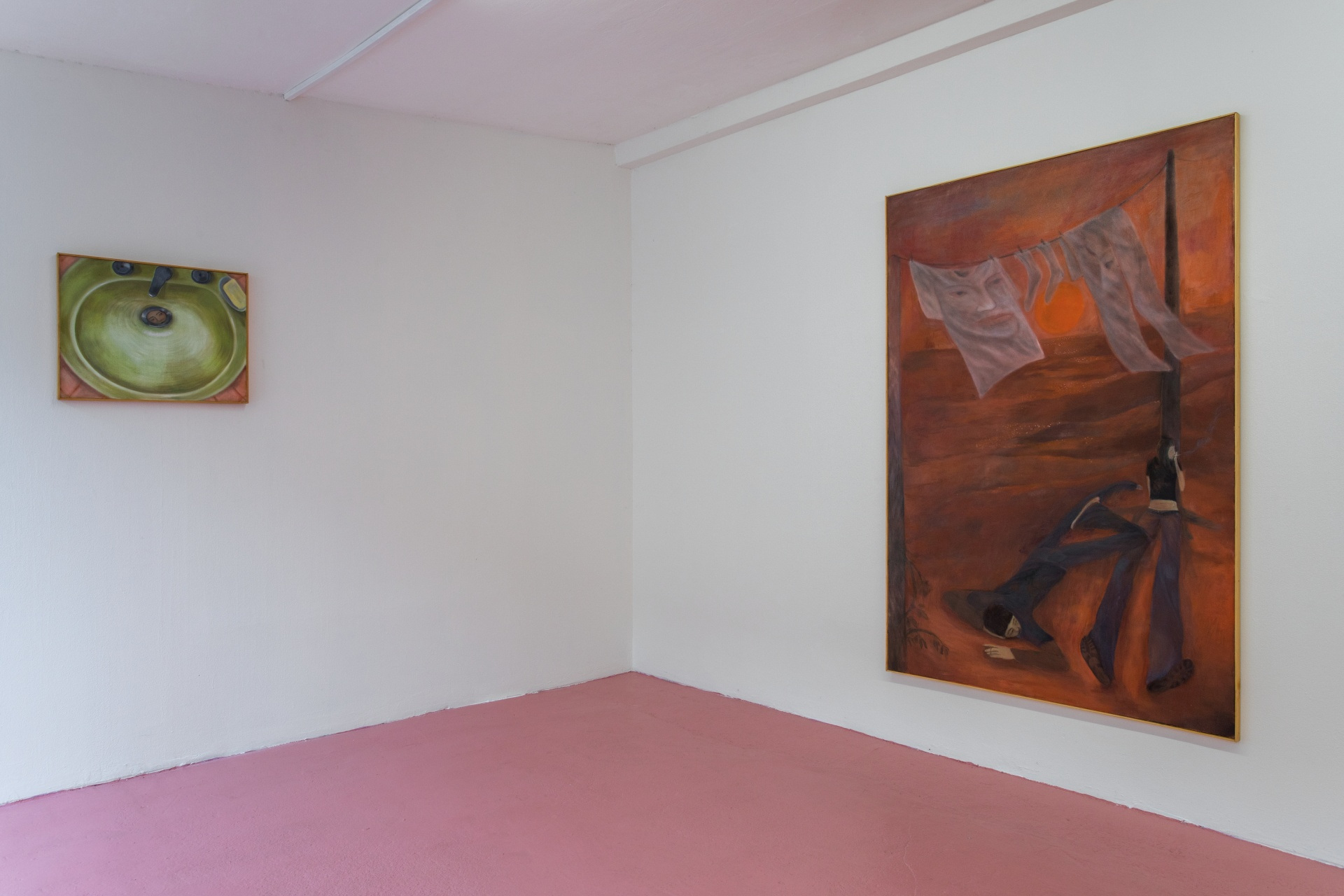
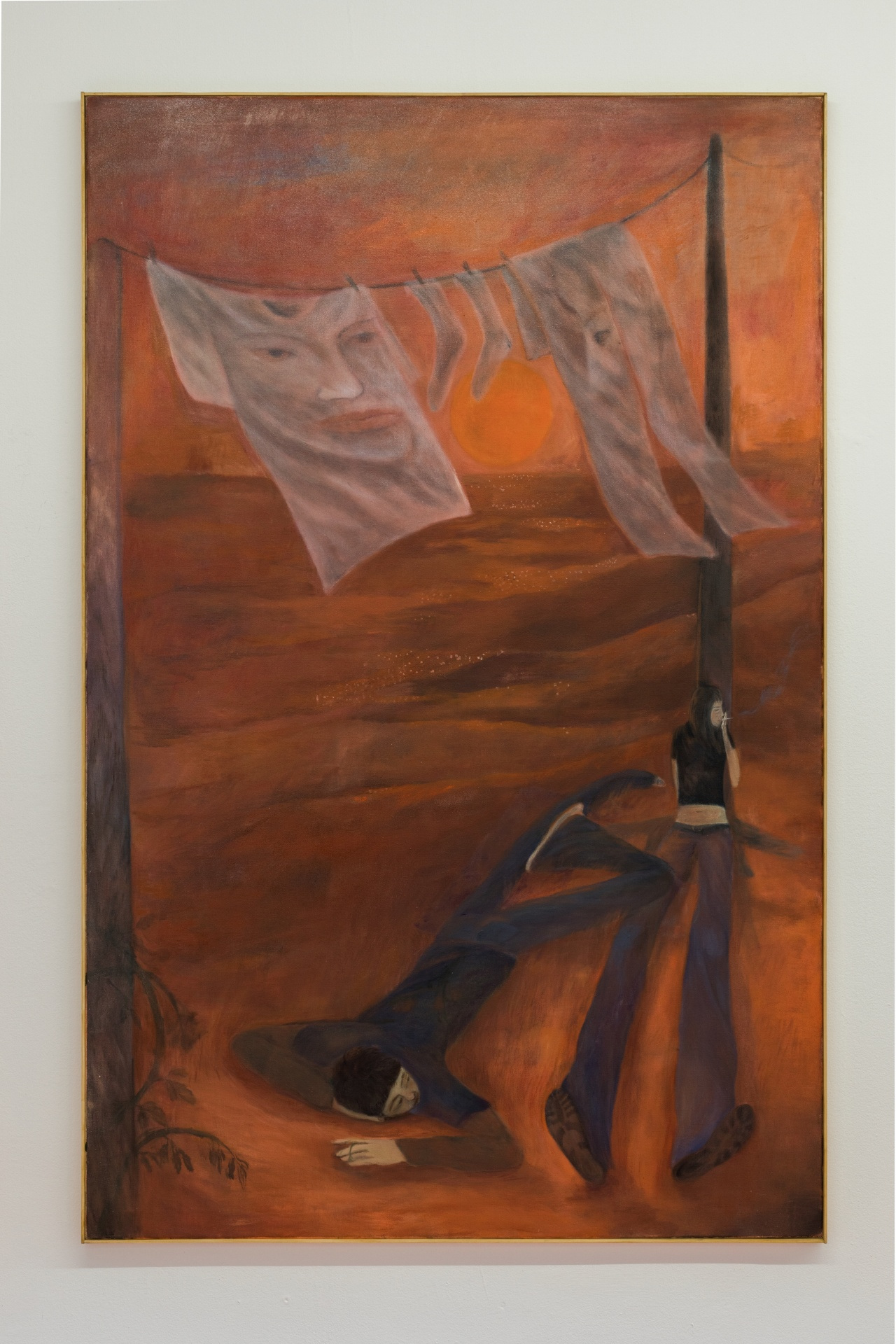
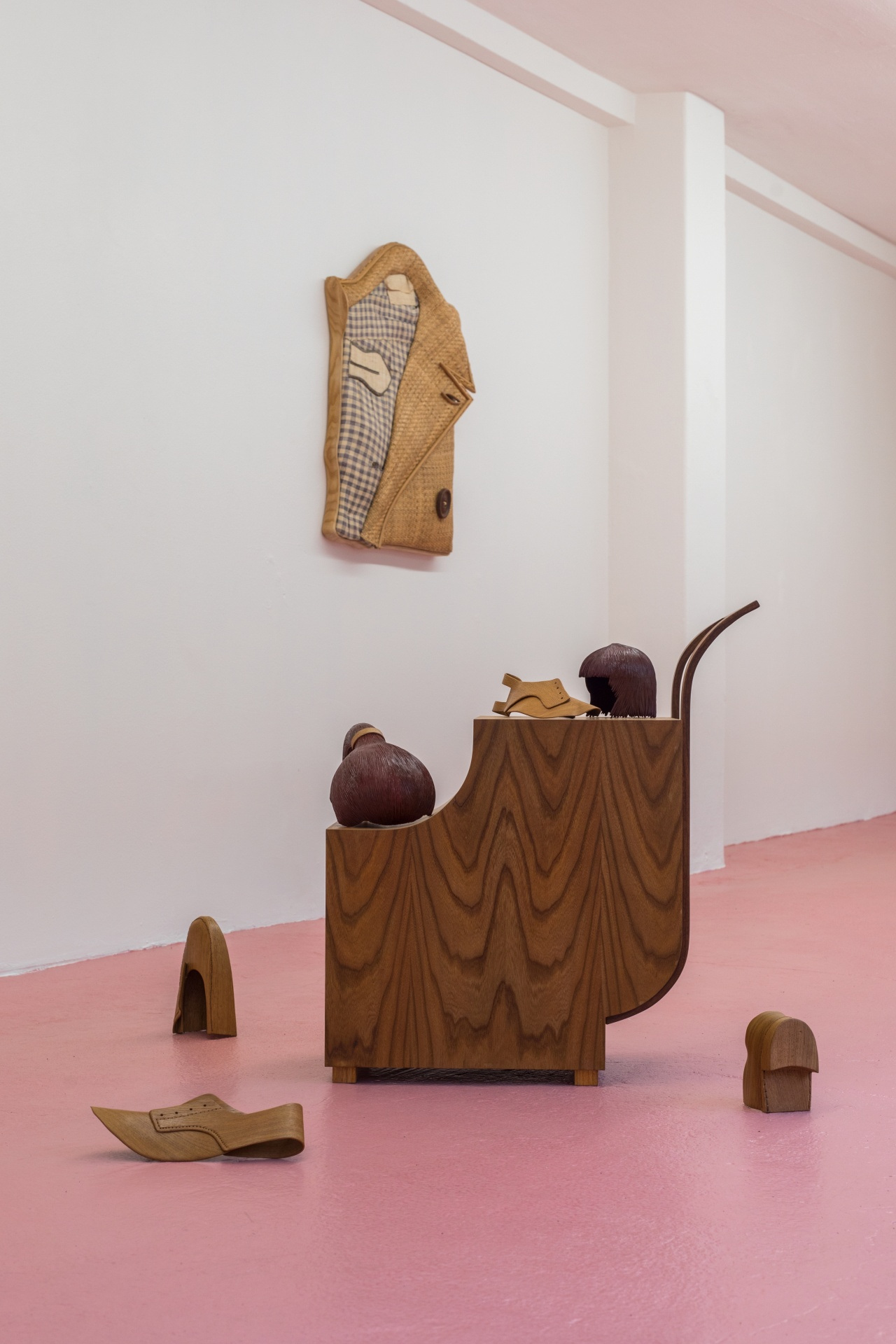

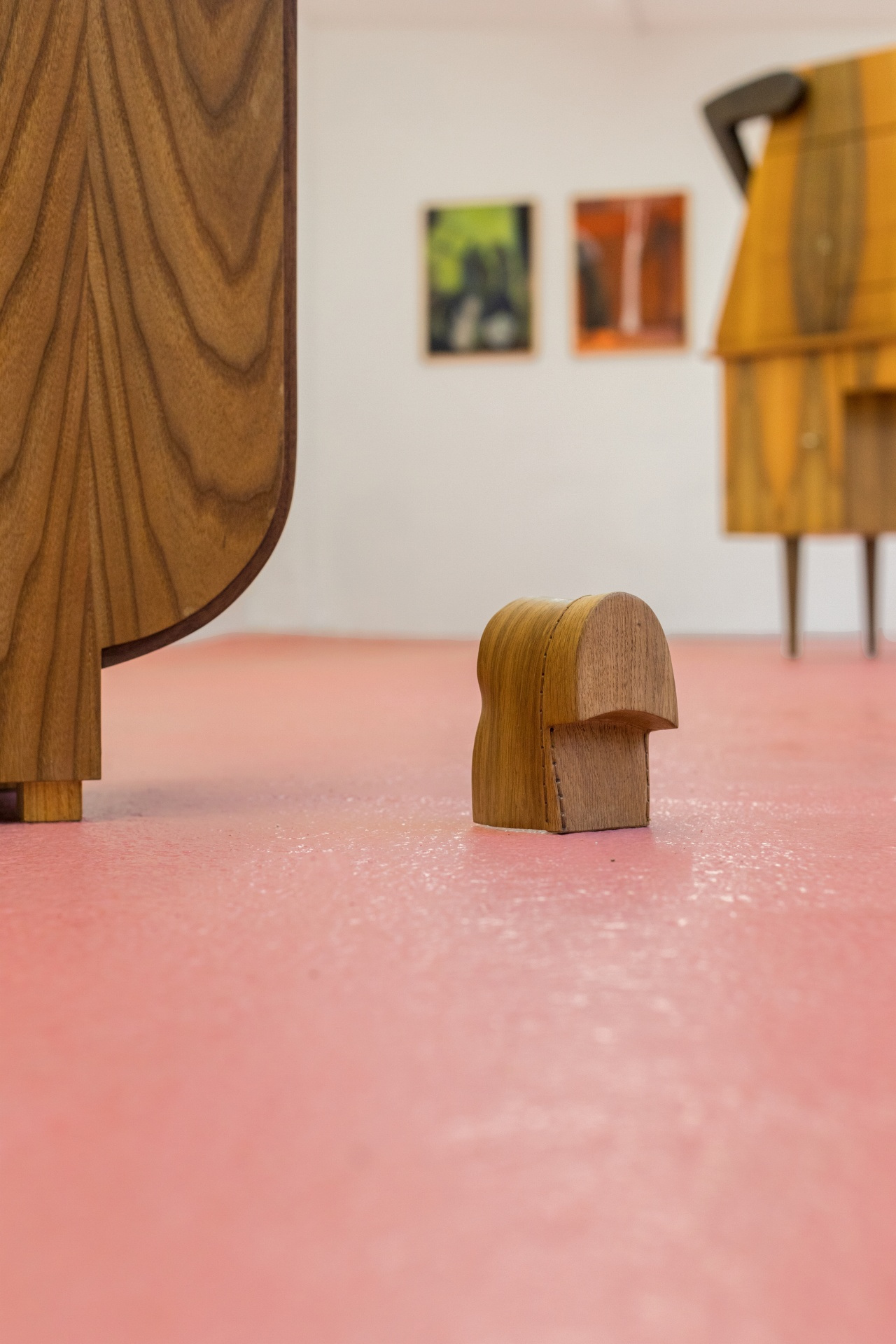
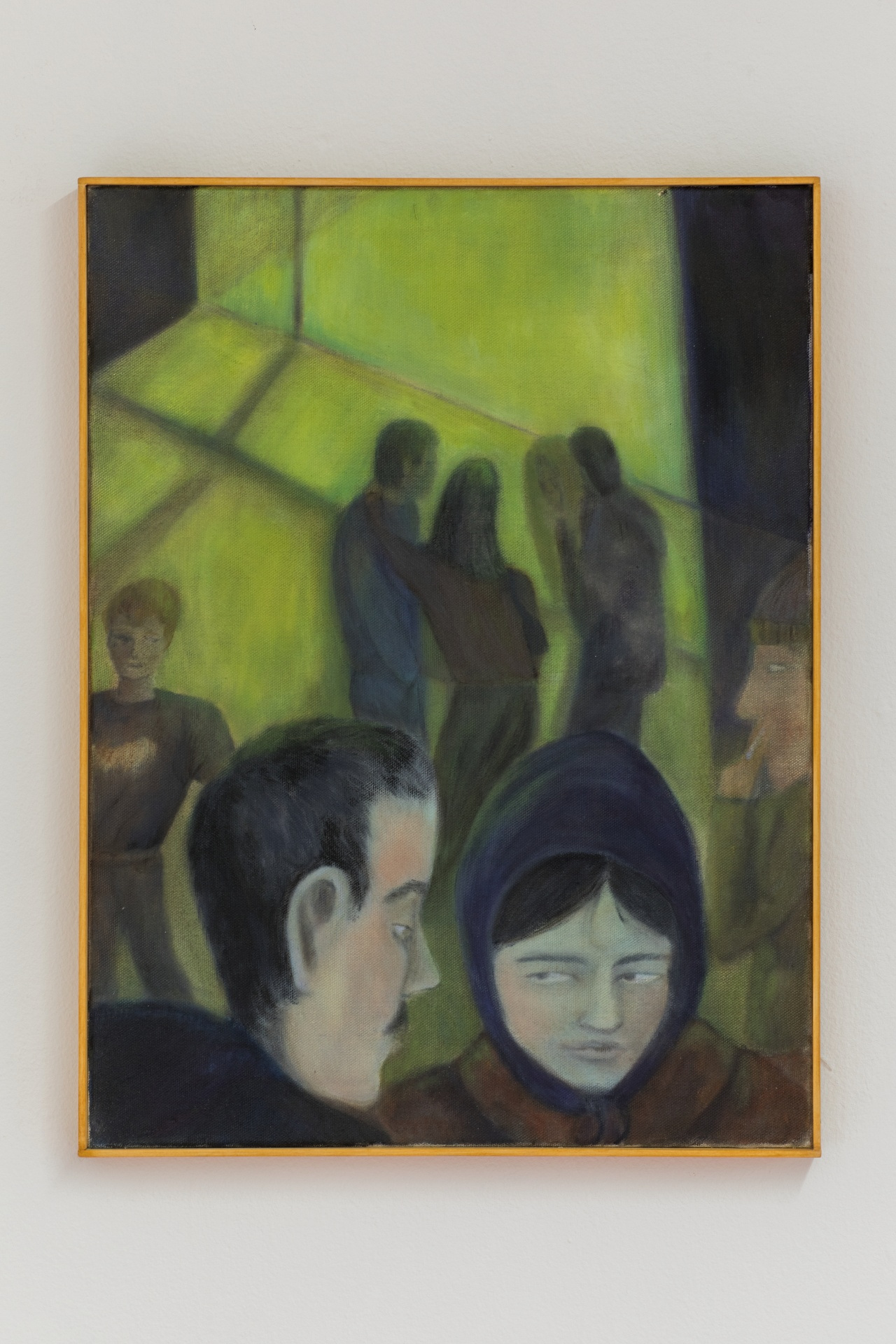
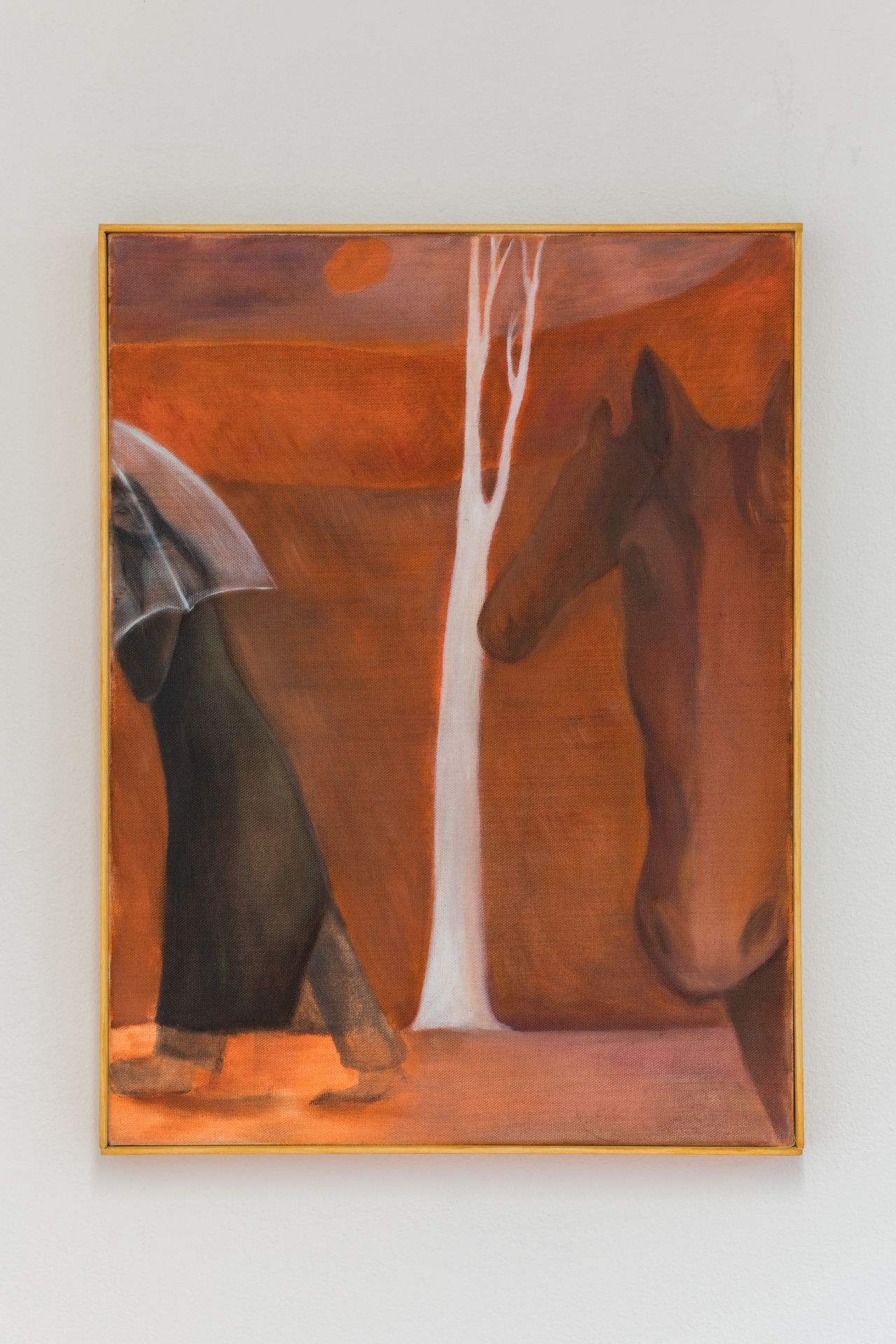
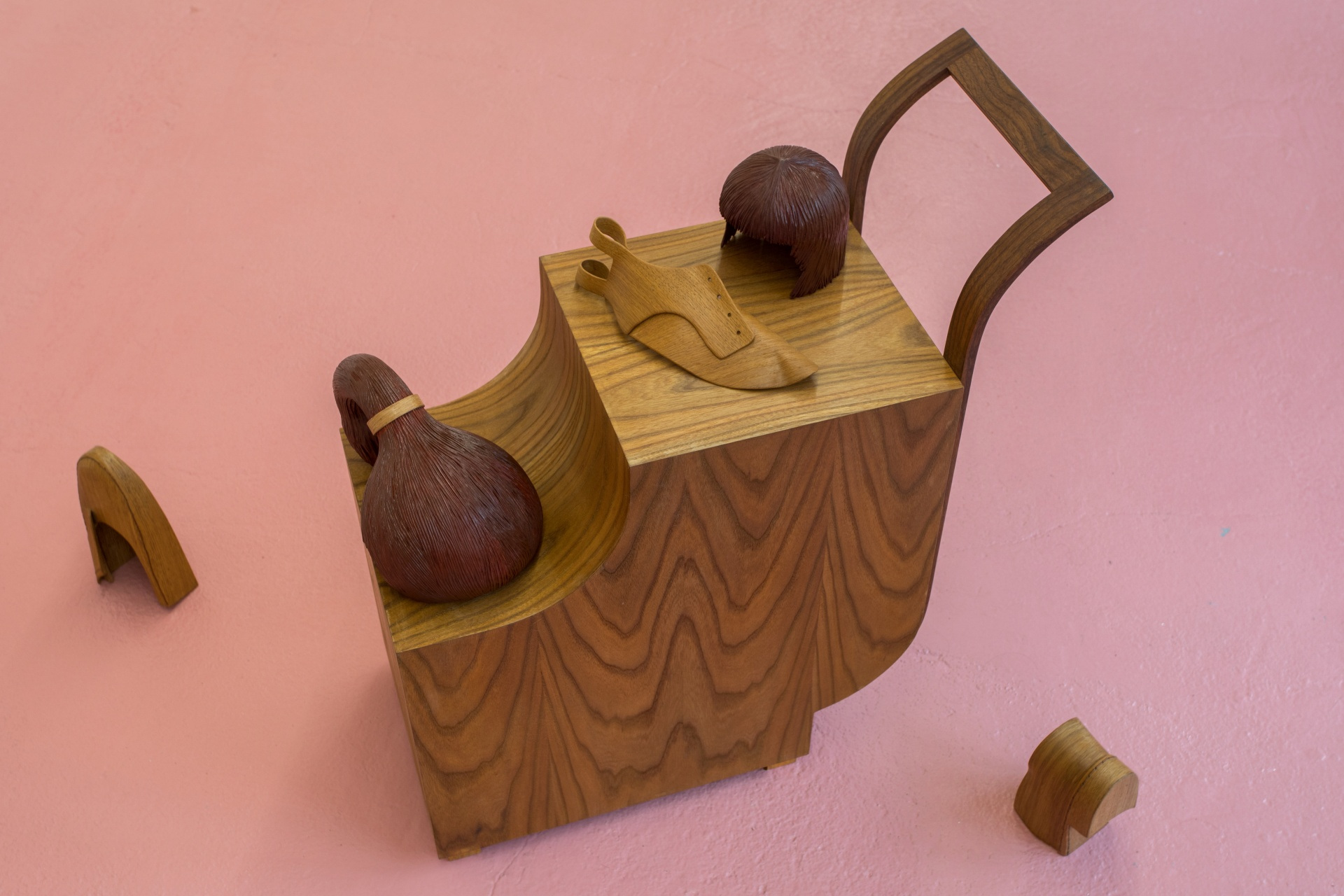
“This gave rise to endless mistakes; for having once stepped into the wrong hallways and onto the wrong stairway, one usually found oneself in a veritable labyrinth of strange apartments, porches, unexpected exits into unfamiliar courtyards, and entirely forgot the original purpose of one's expedition, to remember only many days later, with pangs of conscience – returning on some gray dawn from the detours of strange and tangled adventures – the family home.”
A quiet melancholy and a certain type of nostalgia fills the intimate space of the courtyard space of hunt kastner. In the hazy flood of the blushing floor, whose reflections softly lick the walls, familiar objects of domestic life appear at first glance: an antique wooden cabinet, a wig cart, kicked-off shoes. A few canvases in warm colours furnish the austere white surface of the walls. The air almost seems to smell of bergamot tea, the letterbox full of unopened post, and the telephone, the one next to the brass ashtray, relentlessly droning in the distance, offering a smoky evening glass of wine. But beneath the veil of the warm familiarity that Sofia Tobiášová and Tobias Izsó are building, one can sense a tension. As if by our presence, we have intruded on the private lives of things, become part of a moment when they too need to take a moment to breathe, giving us a glimpse of their unmasked face beneath the surface of the mundane, when the mid-century cabinet shows its own hands and the drying laundry trapped in the canvas shows its face.
Both artists work with motifs that have a strong anthropomorphic quality - furniture, objects, even situations live and react to us, forcing us to reflect on our own identity and everyday rituals. The artistic grasp of the nature of things or situations by Tobiášová and Izsó brings to light the impressions that define particular phenomena for them when one is not looking, but rather just feeling. Although Tobiášová's canvases are highly imaginative, they carry with them something frankly known, almost retrospective, moments that the memory only becomes aware of when it is not disturbed: in one, we observe the moment of drowning one's own still sleepy raw unedited reflection in the siphon of a jade basin; in another, majestic horses in the flood of the burning rural sun; in a third, the vernissage guests in the dim city lights.
The anthropomorphic quality of Izsó's mid-century cabinet evokes a sense of unease when we're not sure whether it/he is attacking us or about to embrace us, just as when the wispy wig and leather derby shoes are corroded in material that is not their own. The finely crafted veneer that Izsó uses on the surface of his objects is reminiscent of a performative shell - how much pain does it take to step through a new fashionable pair of shoes, and how bittersweet is it to put away the wig after a long evening of socializing? And what does their silent presence actually tell us about ourselves? The well-being of artefacts seems to have abandoned their function; they wake up and claim their own fate. The quotidian and its authentic representation becomes a metaphor for the complexity of the self, where even furniture or clothes struggle with existential anxiety.
Eva Slabá

